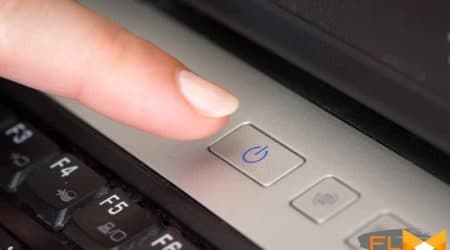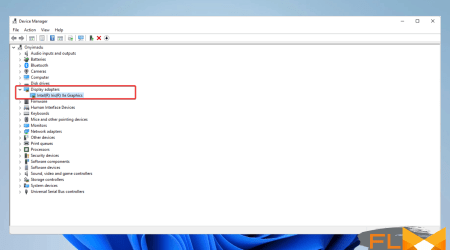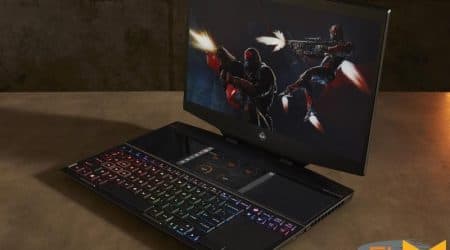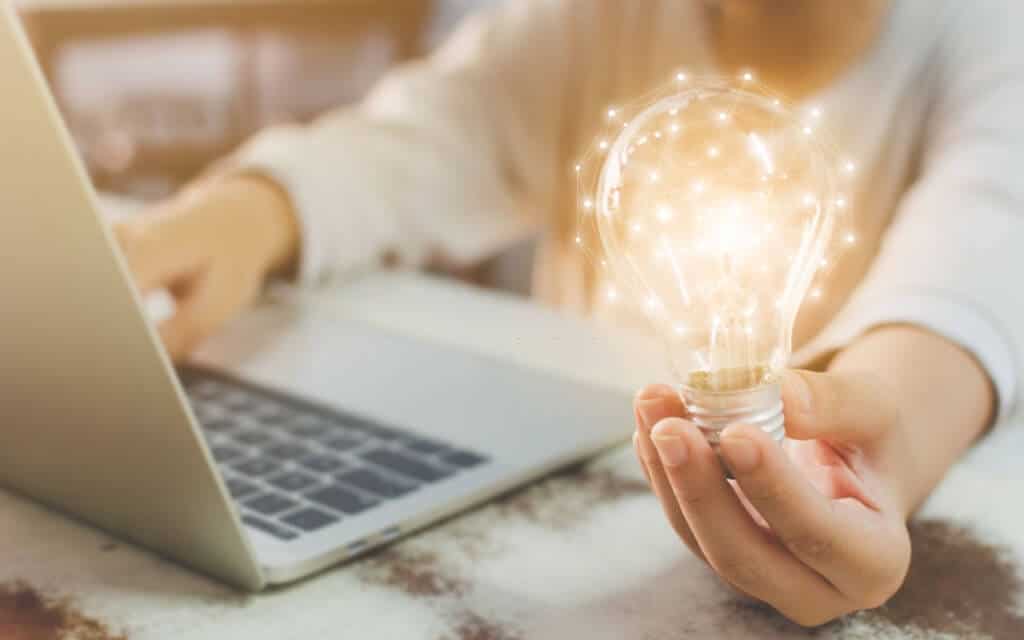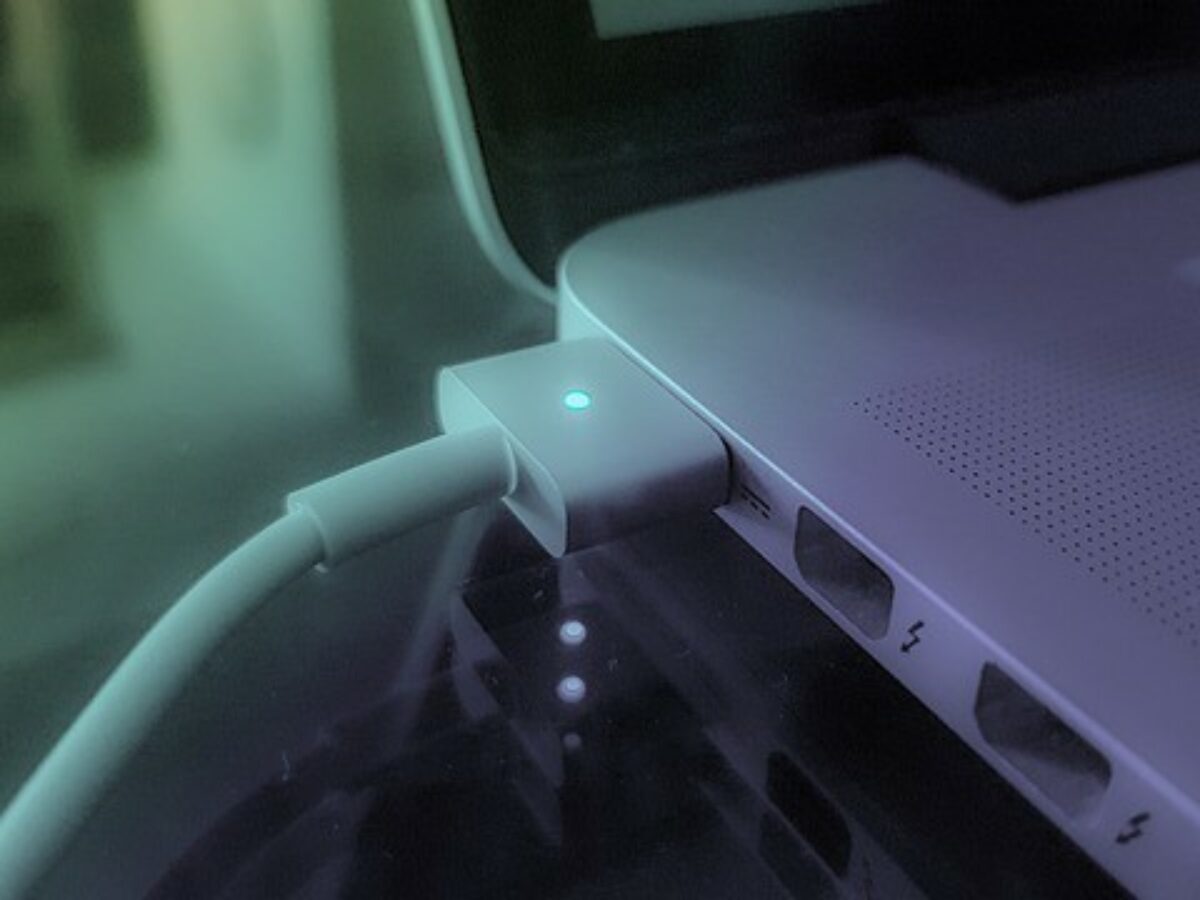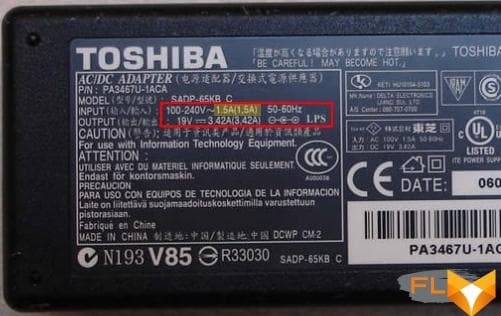


It is not uncommon for laptop users to wonder about the power usage of their device. Whether you are seeking to minimize your carbon footprint, lower your energy bill, or simply optimize your device’s battery life, understanding the laptop’s power consumption can prove beneficial. This article unravels the mystery behind laptop power usage, focusing on the amps required for their operation.
The power usage of a laptop depends on many factors. It relates not only to the technical specifications of the device but also to your usage habits. Everything, from the software you use to whether or not your laptop is charging, can influence the number of amps your device uses. Because there’s no simple one-size-fits-all answer, our exploration here provides a comprehensive understanding of this subject matter.
We aim to provide an in-depth guide that explains the amount of power laptops require for their operation and factors that can affect this requirement. We will start with basic concepts, including what ‘amp’ means in this context, and move on to exploring how different laptop specifications and usage patterns can affect power usage.
Fundamentals of Powering your Laptop: A Closer Look
To comprehend the ins and outs of your laptop’s power consumption, a vital element worth exploring is the method your device utilizes to power up, which is the process commonly referred to as charging. Gaining knowledge about this fundamental process can enhance your understanding of your device’s power management and potentially allow you to optimize its power usage.
The Journey of Charging your Laptop
The act of re-energizing your laptop typically begins with the laptop power adapter usually plugged into a mains electrical outlet. This adapter, aptly nomenclized as the AC (Alternating Current) adapter, serves a critical purpose in this whole operation.
Firstly, the adapter’s job involves the conversion of high-voltage AC from the power outlet into low-voltage DC (Direct Current) appropriate for your laptop’s requirements. Choosing an adapter with the right output voltage is crucial, as a mismatch can lead to potential damage to the laptops battery or internal components. Typically, the correct voltage level will be specified in your laptop’s specifications or inscribed on the adapter.
The Role of the Laptop Battery
The converted power then flows to the laptop’s battery, which is essentially an energy storage device. Its fundamental role is to store the converted DC power, ready to be utilized by the laptop when disconnected from the power source. Notably, the energy stored primarily depends on the capacity of the battery, usually quantified in milliamp hours (mAh) or Watt-hours (Wh).
Laptop batteries’ nature requires special attention. They typically lithium-ion (Li-ion) batteries, regarded for numerous charging cycles they can withstand. However, with persistent use, they suffer from reduced performance and might require replacement over time.
Understanding Laptop Energy Demand: Switching from Measuring Power in Watts to Amps
When it comes to energy consumption of laptops, the most commonly used measure, wattage, encapsulates both voltage and current. However, moving the focus from Watts to Amperes (A) can provide a clearer understanding of laptop power usage.
The measure of power in Watts is an indicator of the overall energy consumption by your laptop. This is a compound measure, calculated by multiplying voltage (V) by current (A). Essentially, it shows how much electric energy is consumed by an electronic device. However, the current or amperage component of this equation is often overlooked when considering power usage.
Why We Should Pay Attention to Amperage
Understanding the Amps used by your laptop can offer a more specified look at energy consumption. Amperage, by definition, is the quantity of electricity that passes any given point per second. It is determined by the energy demand of your laptop.
Knowing the Amperage consumption of your laptop can be vital in scenarios like charging your laptop through power banks, selecting the right adaptors or charging stations, and ensuring the longevity of your device’s battery.
Here’s how you can calculate the Amperage used by your laptop: if you see a statement like ’65 W AC adaptor’ on your charger, divide this by the input voltage (usually around 120V or 240V depending on your country) to get the Amperage. So a USA-based laptop user would get 0.54 Amps (A).
- Transitioning from measuring power to current can give new insights when trying to reduce power usage. Lowering the amperage can often be achieved by dimming your laptop screen, closing unnecessary programs and applications, and choosing power saving options in your laptop settings.
- Amperage informs our understanding of how the energy is distributed within a laptop. Higher coil currents can lead to increased electromigration, impacting the lifespan of your laptop.
In summary, incorporating amperage into our understanding of laptop power usage can lead to better power management strategies and hardware preservation techniques.
Comparing the Average Energy Consumption of Prominent Laptop Manufacturers
Laptop brands vary greatly in terms of the power they require, influencing the device’s longevity on a single charge. To provide an idea of what to expect, we have provided a comparison for several leading laptop manufacturers.
Power Drawn by Noteworthy Laptop Brands
Dell laptops, especially the models in the Alienware line, can often utilize about 3.5 to 4.5 amperes while operating. This is due to the high-performance nature of these gadgets, as they are typically used for tasks such as gaming that requires significant amounts of energy.
Apple’s MacBook series records a varying amount of power usage ranging from as low as 1.0 ampere on a MacBook Air to about 2-2.5 amperes on higher-end MacBook Pro models. The difference in power usage is primarily driven by the device’s performance requirements and display size.
In contrast, ASUS laptops tend to lean towards energy-efficiency. For example, most models in the VivoBook series have been found to use around 1.5-2.0 amperes, but devices that are packed with powerful hardware like the high-end ROG (Republic of Gamers) line can consume about 3.5-4.5 amperes.
HP, one of the most popular laptop brands, offers a diverse range of laptops. Their amp usage varies from as low as 1.0 ampere for basic models and can reach up to around 4.0 amperes for powerful models like the Omen series.
Note: The figures mentioned are estimates and the actual power usage will depend on the specific model and its hardware specifications. Additionally, power consumption can vary based on the device’s settings and usage.
Paying attention to the power consumption of a laptop can influence the longevity of the device’s battery and also its suitability for different environments and power sources. It’s just another factor to consider when purchasing a laptop.
Main Elements Impacting the Power Consumption of a Laptop
Several factors impact how much electric power a laptop draws. These determining elements can range from hardware specifics to the types of applications running on the laptop. Users can monitor and manage some of these aspects to reduce their computer’s power consumption, elongating battery life and reducing electricity costs.
Hardware Components
The hardware components of a laptop are a substantial factor influencing its power needs. Among these, the processor, display, hard drive, and graphics card represent the major consumers of power.
- Processor: More powerful processors consume more energy, especially those with multiple cores or high-speed ratings.
- Display: Larger screens with higher brightness settings guzzle more electricity. LED screens are generally more energy-efficient compared to traditional LCD screens.
- Hard Drive: Traditional spinning hard drives use more energy than solid-state drives (SSDs), which have no moving parts.
- Graphics Card: Computers with dedicated graphics cards consume significantly more power than those with integrated graphics, especially during graphics-intensive tasks such as gaming or video editing.
Software and Usage
The type of software being run and the overall usage habits of the user also significantly impact a laptop’s energy demands. Running multiple programs or applications simultaneously, particularly those that are resource-intensive, can lead to higher energy consumption. Similarly, frequently using peripherals such as external hard drives or gaming controllers can also increase power usage. In addition, laptops running older operating systems may not be as energy-efficient as those with newer, more optimized systems.
Power Settings
The power settings of the laptop also play a vital role. Devices set to ‘High Performance’ mode utilize more energy as they prioritize performance over power saving. In contrast, selecting ‘Power Saver’ or ‘Balanced’ mode can help reduce electricity usage.
In conclusion, understanding the key factors influencing a laptop’s power usage can help users make informed decisions about how to optimize their computer’s performance and energy efficiency.
Examining the Effect of Laptop Usage Behavior on Battery Longevity
Understanding Power Consumption of a Laptop
The longevity of a laptop’s battery is significantly influenced by the daily user patterns and activities done with the laptop. Generally, the more intensive the activity is, the bigger power draw it has, and subsequently, the shorter the battery lifespan gets. It is hence important to understand these correlations to ensure optimal battery management.
High-Consumption Activities
Certain laptop tasks require more electricity and therefore, drain battery life more quickly. These high power-consuming activities include gaming, video editing, and running demanding software or multiple applications simultaneously. The reason these activities consume a lot of power is that they put heavy loads on the CPU and other hardware components, causing them to work harder and hence, require more energy.
Low-Consumption Activities
On the other hand, some tasks impose less strain on the laptop’s components and therefore, utilize less power. These include light web browsing, word processing, and idle time. Adopting a balanced usage pattern, alternating between low and high power-consuming tasks, can be beneficial to moderate the power needs and subsequently improve the battery lifespan.
- Power Management Settings: Most laptops allow users to customize power management settings. By adjusting these settings, users can control processes and hardware use, hence minimizing power consumption.
- Hardware Upgrade: Upgrading hardware components like RAM or SSD can potentially result in lower power consumption since these components can handle tasks more efficiently.
- Screen Brightness: High screen brightness level often consumes a significant amount of power. Reducing the screen brightness can help to preserve battery life.
In conclusion, understanding how different laptop activities and settings impact power consumption can significantly help optimize battery lifespan and performance. Therefore users need to manage their laptops power demands by appropriately mixing less demanding tasks with more challenging ones and making some minor adjustments to their laptops.
Finding Out How Much Power Your Laptop Consumes
If you’re curious about your laptop’s energy consumption, you’ve come to the right place. Measuring power consumption isn’t as difficult as it sounds. With the right resources and time, you can figure out exactly how much electrical power your laptop uses. Here’s a step by step guide:
1. Find your laptop’s power specifications
To start, you’ll need to check your laptop’s power adapter or system settings for power specifications. The label on the power adapter or the system information in the operating system typically provides this information. You’re looking for voltage (V) and current (A). These are the two data you need from your laptop, so be sure to jot them down. Remember, the current is usually given in Milliamps (mA), so you’ll need to divide it by 1000 to convert it to Amps (A).
2. Calculate the power consumption
The next step can be tricky if you’re not familiar with power calculations. Don’t worry, though, you won’t need to become an electrical engineer for this! Just remember that power (measured in Watts) equals voltage multiplied by current. In mathematical terms: Power (W) = Voltage (V) x Current (A). For instance, if your laptop runs at 19.5 Volts and 2.1 Amps, it uses about 40.95 Watts of power.
3. Determine the daily power consumption
Now that you know the power consumption of your laptop per hour, you can calculate how much power it uses in a day. Multiply the previous result by the hours you use your laptop daily. For example, if you use your laptop for 8 hours every day at 40.95 Watts, your laptop consumes about 327.6 Watts daily.
4. Estimate the monthly power usage
To estimate the monthly power usage, multiply the daily power consumption by the number of days in a month. For instance, if your laptop uses approximately 327.6 Watts per day, it consumes about 9,828 Watts or 9.83 kiloWatts monthly. This figure can help you understand your contribution to your electricity bill.
Bear in mind these calculations can only give you an estimate. Factors like software running in the background, battery charge level, and sleep mode can affect the actual power usage of your laptop.
Can Enhancing Energy Efficiency by Lowering Amp Consumption Result in Prolonged Battery Life?
Understanding how laptop power consumption works can provide useful insights into achieving longer battery life. The electricity that laptops use is measured in amperes, commonly known as amps. An intriguing question that emerges in this context is whether lowering the amp consumption of a laptop can extend its battery life.
The direct answer to this query is yes. Power consumption and battery life are directly correlated factors in electronic devices. A reduction in power usage often translates to a longer battery life. The typical laptop uses around 3 to 5 amps when charging, depending on the model and the settings that are active. If we manage to reduce this amp usage, we can correspondingly extend the battery life.
There are several methods for reducing amp consumption:
- Lowering screen brightness: The display of the laptop consumes a significant portion of power. Keeping the brightness at a lower level can save a lot of energy over time.
- Turning off unnecessary applications and processes: Some applications and processes continuously run in the background and drain the battery. Turning these off can conserve battery power.
- Using power-saving modes: Most laptops come with power-saving modes that optimize performance to conserve energy whenever possible. Activating these can cut down amp usage.
It is important to note here that reducing amp consumption might also lead to a trade-off in terms of performance. For instance, reducing brightness might impact visual comfort and turning off applications might affect multitasking ability. Therefore, while trying to reduce amp usage, these factors should also be taken into consideration to ensure optimal use and efficiency.
In conclusion, while reducing amp usage can indeed enhance battery life, it must be handled carefully to maintain a balance with other aspects of laptop performance.
How Laptop Power Adapters Influence Amperage Consumption
The power adapter or charger of a laptop is a key participant in moderating the amount of amps a laptop consumes. Contrary to common belief, these chargers do more than simply replenish the battery of your laptop. They play a substantial role in energy consumption and hence impact the amperage utilization of the device. Therefore, gaining knowledge about the role and operation of laptop power adapters is crucial in comprehending laptop power usage altogether.
Primarily, the power adapter’s role is converting the alternating current (AC) from your power outlet into direct current (DC) that your laptop can utilize. This conversion process inherently impacts the power or amperage drawn by your laptop. Charging devices are typically marked with the input AC information (Voltage and Amperage) and the output DC information. The latter directly indicates the amount of amperage your laptop would consume.
The Working Mechanism of Laptop Chargers
A laptop power adapter operates in three essential phases: rectification, stabilization, and regulation. Initially, in the rectification stage, the high voltage AC from your power outlet is transformed into DC. This is followed by stabilization where the directly-converted energy is smoothed to eliminate irregularities. Lastly, in the regulation stage, the energy is adjusted to a very specific voltage and amperage your laptop requires for optimal operation. This process ensures that your laptop draws a steady and safe amount of power or amperage.
Thus, the power adapter is a major component that determines how much amperage a laptop uses. It is essential to understand that the amperage indicated on your charger, especially on the output, is the maximum amount of current it can provide, but not necessarily the amount it will always deliver. Therefore, the total amount of amperage consumed by your laptop at any given time might vary, depending on the tasks being performed on the device.
Keeping this input-output principle in mind will give a better understanding of the power adapter’s role in determining and limiting your laptop’s amperage use. Therefore, investing in good quality and compatible laptop chargers would guarantee efficient power usage and enhance the overall performance and lifespan of your device.
Guidelines on Reducing the Power Utilization of Your Laptop
Bringing down the energy consumption on laptops can be incredibly beneficial for extending battery life and producing environmental efficiency. Here are some useful tips:
- Lower your screen brightness: The backlight of your laptop display uses a substantial amount of power. Reducing the brightness can significantly lower energy consumption.
- Turn off Wi-Fi and Bluetooth when not in use: Wireless connections drain power due to their constant searching and connecting to networks. Switch these off when they’re not needed.
- Use power-saving mode: Most laptops have power-saving or eco-friendly settings that optimize the system for lower power use. This could involve reducing CPU speed or turning off background processes.
- Remove external devices: USB devices, external drives and other peripherals draw energy from your laptops battery even when not in use. Unplug these devices whenever possible.
- Maintain regular updates: Ensure your software (operating system and applications) are up-to-date. Software updates often include bug fixes that can help reduce energy usage.
By following these tips, you can effectively reduce the energy usage of your laptop and potentially extend its lifespan.
Unfolding the Future of Energy Utilization and Efficacy in Laptops
The evolution of digital technology is transforming the way energy is used in laptops. Advancements in the circuit design and battery technology are setting new benchmarks for power usage in laptops. Researchers are constantly striving to engineer energy-efficient laptops that would reduce reliance on power grids while enhancing the functionality and performance of the devices.
Technological Advancements Driving Energy Efficiency
Improved Processors: Developments in semiconductor technology have led to the creation of high-efficiency processors and microchips. They promise to stimulate reduction in the number of amps required to power laptops, which in turn, decreases their overall energy consumption.
Better Battery Technologies: Constant research is underway to develop advanced battery technologies that can deliver better energy conversion rates. High-capacity lithium-ion batteries, known for their long lifespan and quick charging capabilities, are currently leading the race. Despite this, the quest for sustainable and greener alternatives continues.
Intelligent Energy Management Software: Software developments are also making significant contributions to reducing power demands of laptops. Intelligent power management systems leverage AI algorithms to optimize the power use of different components depending on the nature of tasks being executed, further contributing to energy efficiency.
The objective is clearlowering power consumption while amplifying functionality and performance. Although the magnitude of power a laptop uses has already decreased significantly over the years, we still have a long way to go in achieving truly eco-friendly portable computing solutions.
Conclusion
The pace of technological advancements hints at a promising future for laptop power usage and efficient energy utilization. The combined efforts of hardware and software developments could result in machines that can self-optimize their energy usage for different tasksmaximizing performance while minimizing their carbon footprint. While these developments seem promising, they present a new set of challenges that will require significant research and innovation in the years to come.
FAQ How many amps does a laptop use:
How is laptop power usage expected to change in the future?
Laptop power usage is expected to decrease in the future as manufacturers continue to improve battery technology and develop more energy-efficient components. This could significantly extend battery life and reduce energy consumption.
What new technologies are being developed for energy-efficient laptops?
Several technologies are currently under development, including more efficient processors, improved battery technologies, and better power management systems. We may also see laptops powered by alternative energy sources, such as solar power, in the future.
What role does software play in laptop energy efficiency?
Software plays a crucial role in managing a laptop’s energy use. Modern operating systems and applications are designed to use power more efficiently, reducing the overall energy consumption of the system. Additionally, power management software can adjust settings like screen brightness and sleep mode to conserve power.
How can users contribute to energy efficiency of their laptops?
Users can contribute by managing their power settings effectively, not running unnecessary programs, and turning off their laptop when it’s not in use. Regular maintenance and updates both also help to keep the laptop running efficiently.
How will energy-efficient laptops benefit the environment?
Energy-efficient laptops consume less power, which reduces the overall demand for electricity. This can contribute to a decrease in greenhouse gas emissions associated with electricity production, helping to combat climate change.
Are there any major challenges to improving laptop energy efficiency?
There are several challenges, including developing new battery technologies that can hold more charge, and designing processors that can perform more tasks with less power. There is also a balancing act between improving energy efficiency and consumer expectations for performance and functionality.

